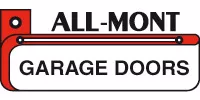
What do you think causes the most service calls for garage doors? Is it the physical doors themselves? Would it surprise you to learn that it is the automatic reverse mechanism, or more precisely, the misalignment of the photo eyes these systems use?
If you are unfamiliar with the photo eyes, here's how they might cause trouble. Let's say you are heading out for the day and you click the remote and open the doors… no problem. Then, you click it again to close the doors, but almost immediately, the door stops and reopens. You might think there is something seriously wrong, but it could just be those photo eyes.
What Are Photo Eyes?
Any garage door openers sold in North American since 1993 must come equipped with an automatic reverse system. This system is a two‑step approach to preventing problems - particularly the problem of people being hit or harmed by the closing of a garage door.
One part of this automatic reverse system relies on photo eye sensors. Just like a pair of eyes, there are two of them and they are installed on opposite sides of the door, facing one another. They are only 6 inches (15 cm) from the ground and the two small units are always aligned with one another.
One of the them is like a transmitter and it sends out an invisible beam towards the other. The "receiver" has a mirror that bounces the beam back to the original. Should anything breach or break that beam during the automatic door opener's operation (the closing operation), it automatically reverses the direction of the door. For instance, if you run your foot in front of one of them as you click the remote, it will give some sort of error reading and prevent the door from closing.
The "other" part of the automatic reverse system is purely mechanical and it is also meant to stop the door from doing harm. The way it works is simple - if it should detect even a small amount of resistance along the bottom of the door (as it is closing), it kicks it into reverse and forces the door to open. You can test it for yourself by laying a 2 x 4 plank on the ground under the door, as soon as the door hits the board, it will go back up. Clearly, this is meant to ensure that the door just cannot close on someone or something.
While We Are Talking Safety
One of the reasons that the two‑part system is necessary is because too many people were injured by closing doors. Today, we still hear of people taking the systems for granted. They'll push the clicker and dash beneath the door and out of the garage. They might leap over the beam thinking that they are safe. We say - never do this!
Accidents occur frequently in this type of situation with children who want to hurry out for one reason or another, and then are struck by the door. Even two‑part solutions can have problems. If you find yourself or others in the home tempting fate in this way, we suggest installing a keypad on the outside frame of the door. It works like a kind of battery‑powered cordless remote operated using a 4‑digit PIN and eliminates any need for a mad dash.
What Makes the Photo Eyes Malfunction?
Problems can arise, like the one we described earlier in which the door didn't close after being opened, if the eyes are out of alignment. For example, you might be tinkering with a water main or something near the door and accidentally nudge one of the sensors. This moves the eye and it cannot communicate with its neighbor across the doorway.
If we return to that situation we outlined, you'd try to close the door after successfully opening it and backing the car out into the drive, but without luck. If the door's light or the LED control panel shows something blinking, or you hear some clicking with blinking, it is a typical sign that the photo eye system is misaligned.
How to Fix It
Is it a DIY sort of repair? Actually, it could be. You can try to realign the light beam between the two units with your naked eye. Is one shifted or out of position. If you have a control panel it can guide you by ceasing to blink once the eyes are realigned. Also, look at the attaching screws and bolts. Are both tightly connected to the system? Clean off the lenses, too, as dust and debris could also be a problem.
If a test run is a success (i.e. you open and close the door with remote), you are good to go. However, if it fails to operate properly, it is no longer a DIY project. Now you'll need to get in touch with an expert who will examine the wiring between the units and the system's motor. These might be damaged and need to be replaced or repaired. If you fail to see or find the problem, always contact experts.
If You Can't Fix the Problem
Never do repairs DIY if they are not super simple. Just contact us right away, toll free at 1-800-957-5865. We provide the kind of experience and advise you need in order to make the right choices or take the right steps. We have respect for budgetary limits and always offer a few answers for any needs or limitation.
We will happily send you a no‑obligation free quotation by email, but also welcome you to our showroom where we can show you samples or steer you towards our fun and appealing Design Centre. This lets you upload an image of your home to see what a new door might look like or use our image gallery to discover what others have done.









Add new comment